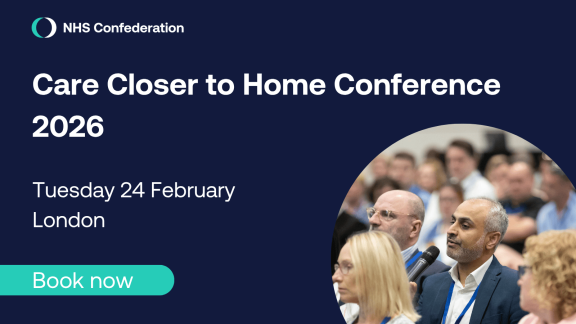New care models and prevention: an integral partnership

Back in 2004, the Wanless report Securing good health for the whole population, commissioned by the government, identified the “potentially large gains to be made by refocusing the health service towards the promotion of good health and the prevention of illness” and warned that unless the country started taking prevention seriously, we would be faced with a sharply rising burden of avoidable illness. Yet over ten years later, there remains a broad consensus that this ambition has not been realised and that the NHS is struggling to cope with the consequences.
The Five Year Forward View (the Forward View), published in October 2014 by the arm’s-length bodies of the NHS in England, acknowledged this and argued that “the future health of millions of children, the sustainability of the NHS, and the economic prosperity of Britain all now depend on a radical upgrade in prevention and public health.”
The Forward View sets out a vision for a sustainable NHS which involves addressing three key gaps: the health and wellbeing gap, the care and quality gap, and the funding and efficiency gap. On the health and wellbeing gap, the Forward View echoed Wanless by giving a clear warning of its own:
“If the nation fails to get serious about prevention then recent progress in healthy life expectancies will stall, health inequalities will widen, and our ability to fund beneficial new treatments will be crowded-out by the need to spend billions of pounds on wholly avoidable illness.”
The Forward View vision is of a sustainable NHS that delivers care in new ways, underpinned by six principles for empowering people and communities which reflect the commitment to promoting wellbeing, preventing ill health and closing the health and wellbeing gap. They are:
- care and support is person-centred – personalised, coordinated and empowering
- services are created in partnership with citizens and communities
- focus is on equality and narrowing inequalities
- carers are identified, supported and involved
- voluntary, community and social enterprise and housing sectors are involved as key partners and enablers
- volunteering and social action are recognised as key enablers.
Many were disappointed that the recent Spending Review did not explicitly invest in prevention or public health funding. However, key to the realisation of the Forward View vision and principles has been the development of ‘new care models’ which have both of these at their heart, and are forging ahead. These are the following: integrated primary and acute care systems (PACS), multispecialty community providers (MCPs), enhanced health in care homes, urgent and emergency care, and acute care collaborations. Through a rigorous process, involving workshops and the engagement of key partners and patient representative groups, 50 new care model ‘vanguards’ were selected. They are now taking a lead on the development of new care models which will act as blueprints for the NHS moving forward and as inspiration to the rest of the health and care system.
The vanguards and prevention
Just as prevention is at the heart of the Forward View, it is central to the vanguards, all of which were called upon to set out how they planned to address the health and wellbeing gap in order to be selected for the programme. This publication looks at how five of the vanguards are getting serious about prevention. They are:
- All Together Better Sunderland (MCP)
- West Wakefield Health and Wellbeing (MCP)
- Sutton Homes of Care (enhanced health in care homes)
- Connecting Care – Wakefield District (enhanced health in care homes)
- Solihull Together for Better Lives (urgent and emergency care).
At this stage of the programme, what the vanguards are doing on prevention is very much emerging practice rather than evaluated practice. But given the ambition to deliver the Forward View vision at scale and pace, we hope that the case studies will prove to be a valuable resource for other organisations and partnerships developing new care models across the country.
It is important to recognise that prevention of ill health looks different in different circumstances, for example, the needs of a city-wide population will differ from those of the population of a care home. In some cases, ‘prevention’ might mean preventing an unnecessary admission to hospital, while in others, it could involve proactive monitoring of the health of the whole population and identifying the groups most at risk of ill health. But what different prevention initiatives will have in common is that they are focused on keeping people well and helping them to retain their independence rather than caring for them when they become unwell. Key to the successful prevention of ill health is a collaborative approach, with every health and social care professional, as well as those groups delivering other services, taking every opportunity to ‘do’ prevention within their communities. Beyond this, it is critical to trust and support people to look to their own health.
The vanguards, like others working on prevention, must seek to empower people to manage their conditions and maintain their good health and wellbeing for the future.



